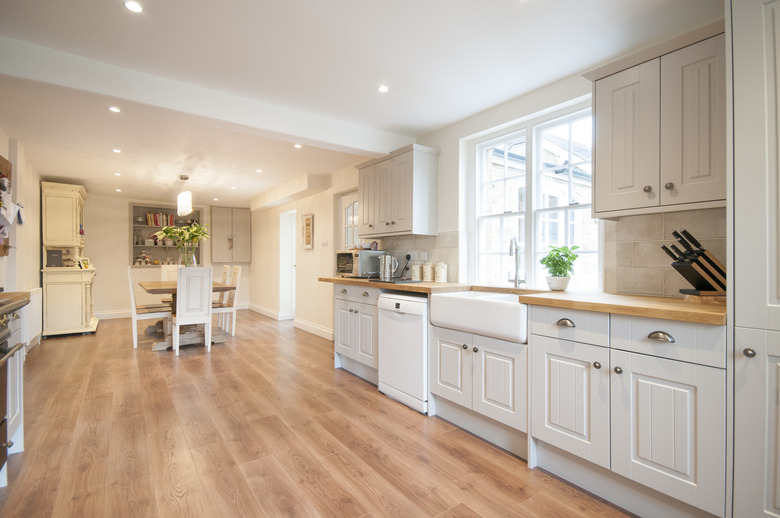How To Install An Antique Cast Iron Kitchen Sink With Drainboard
Vintage appliances and accents are still a great way to bring style into an otherwise standard kitchen. Bringing in an antique sink can provide a focal point to design the kitchen around. Older sinks are normally made from cast iron, which is an incredibly durable material; the cast iron is then coated with porcelain enamel to give the sink interior that classic farmhouse kitchen look.
Restoring a Cast Iron Sink
Restoring a Cast Iron
Sink
Often, homeowners will choose to start from an actual antique cast iron sink, which can sometimes require restoration work. Rust should be removed from the sink using a wire brush, sander or paint remover disc, depending on the severity of the problem.
After cleaning out the antique, fill in any cracks, dents or patches with the appropriate kind of putty. Once everything has dried and cured, the sink can be repainted with a rust-proof enamel paint, which should additionally help extend its life.
Enameled cast iron is a great material for your sink because it retains heat, making it helpful in keeping your dishwater warm. In addition, it is very durable. Short and Long of It explains that you can help maintain it after installation by taking care with heavy pots and pans, which may dent or chip it if you drop them.
Installing a Cast Iron Sink
Installing a Cast Iron
Sink
Installation can be difficult because cast iron is heavy. In fact, as Old House Online explains, an antique cast iron kitchen sink can weigh over 200 pounds. This means you'll need to install additional supports into the existing cabinetry to ensure the structure can support the sink's weight.
This also means additional caution needs to be taken when moving and lifting the sink into place; any relocation of the sink is likely to be a multiple-person job. The installation can be done by a skilled individual (and helpers) using the following general guidelines.
Guidelines for Installation
Guidelines for Installation
First, measure the sink and make sure it fits in the intended space with enough counter space on either side to suit the kitchen's arrangement. Measure and mark anywhere the existing counter will need to be removed. Be sure to measure the depth as well to open up any needed space under the sink and account for the lip at the edge of the sink.
Once everything has been marked, cut out the required space in the cabinets using a jigsaw. Be sure to wear safety glasses to protect the eyes from any debris. Measure and cut a series of 2 x 4-inch supports as needed by the particular design of the counter and cabinets. These should be installed using wood screws and anchored to the existing structure of the cabinets.
The sink may require a middle support 2 x 4 or a plywood support it can sit on. If required by the design, measure and install these as well. Be sure to cut away enough space so that the water lines can access the sink easily without eroding the support.
Caulking and Puttying the Sink
Caulking and Puttying
the Sink
Once the supports are in place, spread out either caulk or plumber's putty around the edges of the sink hole; this will seal the sink to the counter surface. After the surface has been covered, lift the sink — with assistance — and set it into place. Clean up any excess caulk or putty.
Once the sink is in place and the caulk or putty is dry, connect the water lines to the sink, as well as the fixtures. A plumber may be necessary to connect the water lines if you are unfamiliar with pipe work.
At this point, the sink should be functional; check for leaks beneath the sink to avoid water damage. Vintage fixtures can be chosen to add appeal to the antique sink piece.
